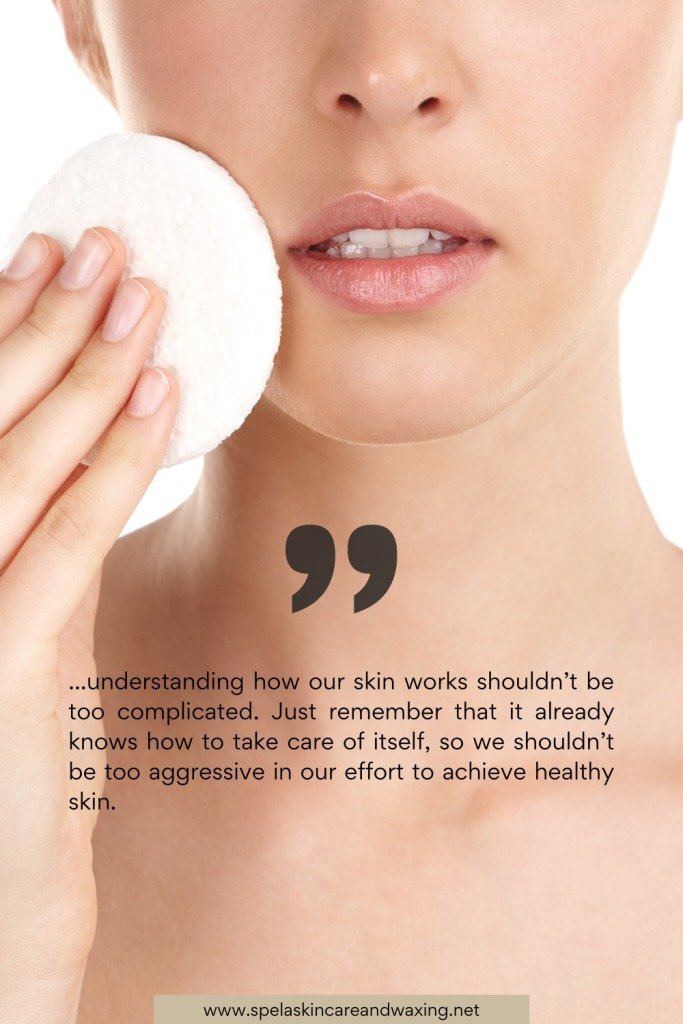Understanding How Our Skin Works
By now, you’re probably already aware of the fact that the skin is the largest organ of the human body. And yet, we often take it for granted, failing to take better care of it. Or perhaps, you are taking good care of your skin, but somehow all the treatments and skincare products you’re using do not seem to be working.
Either way, the first and crucial step to achieving beautiful and healthy skin is by understanding how our skin works. Once we finally have a better understanding of it, only then can we effectively achieve and maintain healthy skin.
Isn’t it remarkable how our skin is constantly renewing and repairing itself, working semi-independently to preserve and protect itself regardless of the environment?
Here’s the thing: the skin works more effectively in protecting the body from bacteria, sun exposure, and environmental toxins when we are younger. But as we grow older, we go through significant changes in our skin and it somewhat loses its ability to efficiently and effectively protect our body.
This is why by understanding how our skin works, we will be able to understand how to take better care of it and correctly differentiate which products or treatments are necessary and which are not.
Let’s start with the basics:
The 3 Primary Layers of the Skin
Epidermis
The epidermis, which is the outermost layer of the skin, is avascular (it does not have any blood vessels) and also has its own layers which are the stratum corneum, stratum granulosum, stratum spinosum, and basal layer.
The basal layer is the deepest layer of the epidermis, and closest to the dermis. It is the passage for the nutrients and oxygen that the epidermis needs. This layer is also considered as the feeding center for our epidermal stem cells, keratinocytes, and melanocytes (cells that are responsible for determining the color of our skin and protecting it from the harmful effects caused by UV radiation).
The stratum spinosum, also known as “spinous” or “prickle-cell”, possesses cells that produce lipids that prevent evaporation and is partially responsible for our skin’s flexibility and strength. The stratum spinosum is also the layer where the production of keratin begins. Keratin is the main protein in our skin and is responsible for holding skin cells together to form a barrier.
Just above the stratum spinosum is the stratum granulosum, also called the granular layer due to the grainy appearance of the cells found here. This is where keratin proteins and waterproofing lipids form.
The stratum corneum is the outermost layer of the epidermis and the only layer of skin that we can see with our eyes. We often consider this as “dead” skin cells. The truth is, the stratum corneum is a crucial part of our epidermal barrier as well as an important part of our skin’s health because these dry, dead layer aids in blocking the penetration of microbes, dehydration of underlying tissues, and basically protects our skin against environmental trauma like abrasions, light, heat, chemicals, and microorganism. It also prevents fluid and blood loss because of its protective-barrier functions. The cells in this layer are shed regularly into the environment (and become part of the dust around us) and are replaced by the cells pushed up from the stratum granulosum.
Keratinocytes make up about 90% of the cells in the epidermis, sitting at the bottom of the epidermis and collecting enough lipids, proteins, and enzymes to be able to develop into each of the different layers of our protective barrier. The final stage of that development is what we call “dead skin” and, unfortunately, many people often blame this “dead skin” for causing wrinkles, uneven skin tone, and even dull skin when, in fact, they actually take a very important part in our skin’s health.
It is also worth noting that even though the dermis is the most essential target when it comes to coming up with skincare strategies, it is the epidermis that our skin actually prioritizes.
The epidermis is able to prevent infections growing on the skin because of its low pH stratum corneum function which is why the skin prioritizes delivering nutrients to the epidermis to make sure that it is always intact.
But because of this prioritizing, it can also result in losses to the dermis which thins as we age.
Now that we’re slowly understanding how our skin works, we can clearly see that the epidermis is truly an intricate and important part of the skin. But also equally important is the layer that delivers all the necessary nutrients to the epidermis, and that is the dermis.
Dermis
The dermis, which is the thickest of the 3 layers of the skin, lies underneath the epidermis and contains collagen, elastin, and glycosaminoglycans (GAGs). Two of the most important cells that can be found in the dermis are called fibroblasts and macrophages.
Fibroblasts are the primary cells found in our dermis because they are responsible for producing collagen, elastin, and GAGs. They depend on several nutrients in order to function and be healthy.
Macrophages are crucial for the repair and maintenance of the skin and its capillaries which means that they play an important role in all stages of wound healing. They are responsible for producing the majority of growth factors in the skin and are involved in coordinating immune function within the skin.
Subcutis
The subcutis is the deepest layer of the skin and is a source of stem cells, vitamins, minerals, and cellular components. This is also the layer of the skin where fat is deposited and stored. The subcutis is also partly responsible for cellulite because it swells in areas where the skin has “septae” which weighs it down due to poor dietary habits.
The Skin Can Adapt to Different Environments
Did you know that our skin can actually also adapt to different environments?
For example, people who are born into environments that are typically more exposed to the sun tend to have darker skin. This is because their skin has already adapted to the climate and therefore produces more melanin which is effective in minimizing the damage from too much UV exposure.
However, people with fair skin who live in such an environment will find that their skin will increase the number of melanocytes to help effectively minimize sun damage.
Skin also adapts to lack of oxygen wherein if the skin becomes low in oxygen, it will bring in oxygen from the atmosphere in order to maintain the right amount of levels in the epidermis.
Another way the skin adapts is how it responds to inflammation. When we go out into the sun, our skin instantly starts producing antioxidants and repairing damaged DNA that occurs due to UV light exposure.
In a normal and healthy cycle, the epidermis restores itself nearly every 30 days, but as we age, and nutrient delivery declines, the cellular DNA damage lessens efficiencies, as well as reduces manufacturing capacity.
When the epidermis isn’t receiving the proper nutrients it needs, it then adapts in order to preserve itself. Once it has recognized that there has been a loss of nutrient delivery, the epidermis slows its turnover rate to maintain a complete barrier without compromising the health and stability of the skin.
Common Skincare Misconceptions
Although forced exfoliation can speed up the turnover rate, which can be misunderstood as an antiaging effect, what it really does is make the skin go into an emergency repair response causing the skin to become more stressed and even compromised.
One other way we interfere with how our skin works is through the use of retinoic acid. Retinoic acid sends messages to different parts of the remodeling aspect of the cell and therefore interferes with the advancement of normal epidermal maturation. It also interferes with the process of tearing down damaged collagen and slows down melanin production.
There is no denying that retinoic acid is very effective and valuable when our skin makes it for us, but products like Retin-A, especially when used on a daily and long-term basis, can actually contribute to premature skin aging.
Another ingredient that functions on a feedback loop is ceramides. They are part of a lipid structure that helps hold the skin together by creating a protective layer that limits moisture loss and shields against visible damage caused by pollution and other environmental toxins. But when we apply ceramides to the epidermis, what this does is actually send the message that the cells at the base of the epidermis need to slow down, but in most cases, people actually need their epidermal turnover rates to speed up, not slow down.
To wrap it up, the skin is indeed a phenomenal and complex part of our body, but understanding how our skin works shouldn’t be too complicated. Just remember that it already knows how to take care of itself, so we shouldn’t be too aggressive in our effort to achieve healthy skin.
At Spalina, we believe in trusting in the skin’s intelligence and, for that reason, strive to work with it, instead of against it by developing products that feed the skin the appropriate nutrition it needs in order to thrive.
If you’re interested in scheduling for a consultation, but live too far away, we also offer a virtual consultation as well as distance skin coaching.
Book your consultation now and let us be your partner in achieving beautiful and healthy skin.



